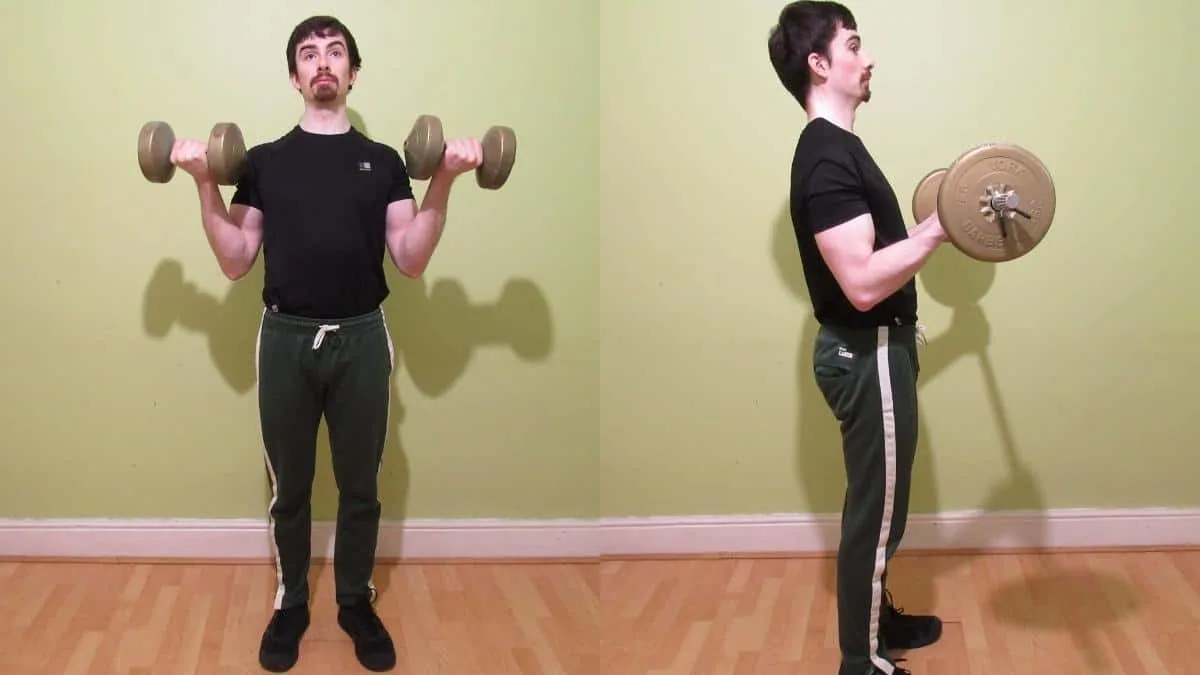If you’re looking for a good substitute for the cable bicep curl to grow and develop your bicep muscles, then you’re in the right place.
Our proposed alternatives cover bands, bars, dumbbells, and cables themselves. So no matter what equipment you have available, you’ll be sure to find a suitable cable curl alternative that you can perform either at home or in the gym.
Top 5 cable curl alternatives
This guide covers the alternatives to various types of cable curls, such as the overhead and standing variations.
1. Resistance band curls
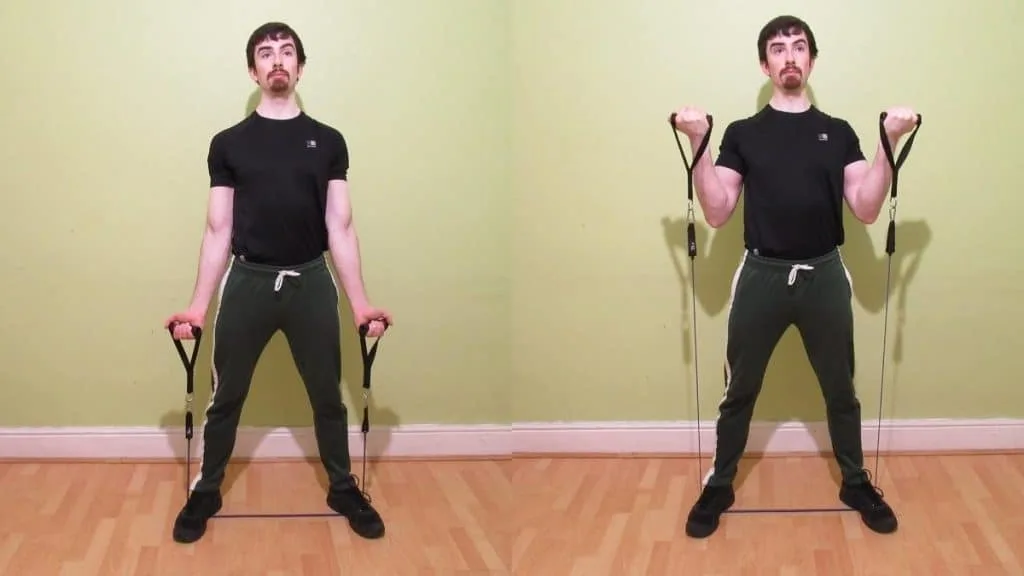
Resistance bands closely mimic cables in both appearance and exercise execution. The main benefit, of course, is that bands are portable whereas cables aren’t. As such, you can stay more consistent with your workouts by using bands because you can take them just about anywhere.
If you have a door anchor for your bands like I do, then you can essentially create your very own cable pulley system, from which you can perform curls and many other muscle-building exercises.
Bands have also been proven in research to promote similar strength and muscular adaptations as conventional resistance training. [1]
The downside of bands as a standing bicep cable curl alternative is that the resistance isn’t as consistent as that provided by cables. This is so because the band becomes heavier as you stretch it. Cables, on the other hand, exert the full weight of the selected resistance from the moment that you first lift the weights off the stack.
2. Barbell curls
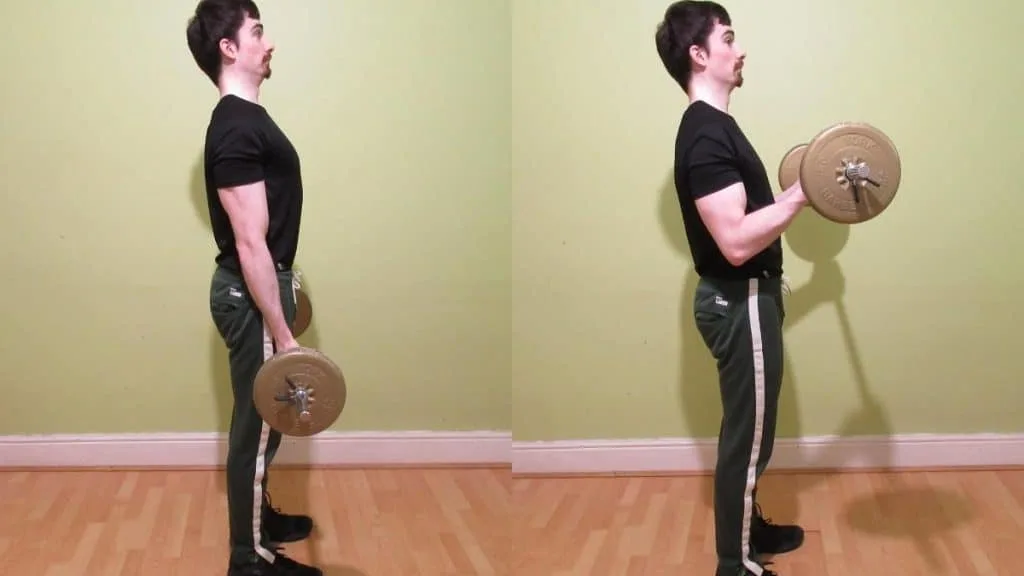
As we mentioned in our cable curls vs barbell curls article, free weights have a proven track record for building bicep mass. As such, if you want a reliable way to gain size, then lifting heavy barbells is definitely one of the best options.
Sure, there aren’t as many exercise possibilities as with cables because barbells don’t have different attachments. However, sometimes sticking to the proven basics is your best bet so that you don’t get distracted by new and over-hyped exercise fads.
The downside is that barbell curls are generally a bit harsher on the joints than their cable counterparts. This is because your connective tissue has to bear the full load when you train with barbells. But when you lift cables, the machine helps you to stabilize the weight somewhat so that you focus more on the target muscle.
3. Dumbbell curls

In our previous cable bicep curl vs dumbbell bicep curl comparison, we noted how both types of equipment are equally effective for stimulating muscle growth, even if dumbbells do have a longer track record in building impressive arms.
Dumbbells are incredibly versatile, and they make a fantastic high cable curl alternative because if you curl with your arms in front of your body, then you can achieve a really intense peak contraction like you would with cables.
The main downside with dumbbells is that you typically have to make 5lb weight jumps to the next pair of dumbbells, which is particularly challenging for a small muscle group like the biceps.
Cables, on the other hand, are very easy to microload because you can attach fractional plates to the selector pin to make the weight jumps more manageable.
4. Alternating curls
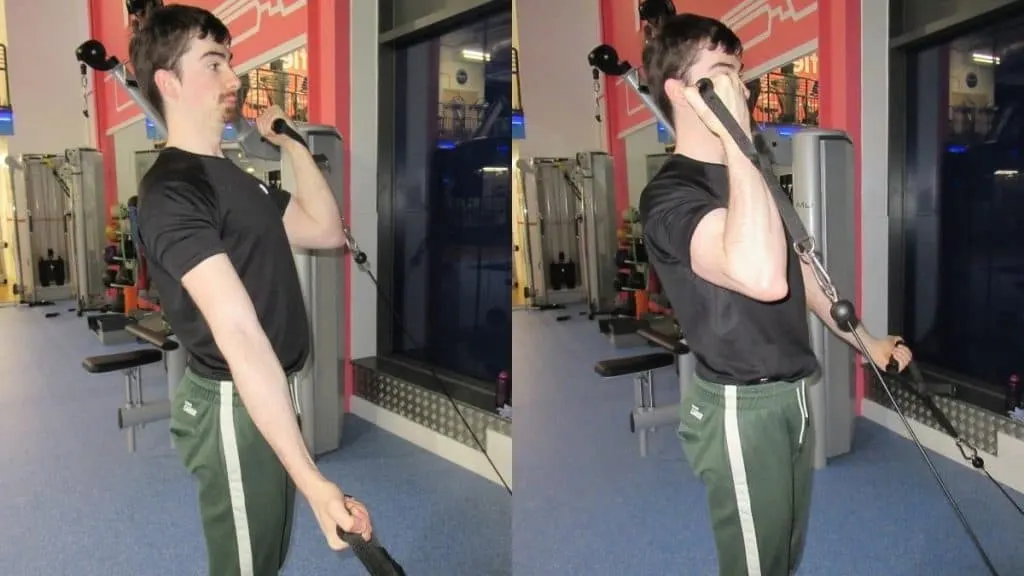
The cable alternating curl is a good replacement for the regular standing version because by training each arm separately, you can ensure that both of your biceps receive equal work. This not only improves your upper body symmetry, it also helps you to develop a stronger mind-muscle connection because you only have to focus on stretching and contracting one arm at a time.
You can, of course, perform this exercise with dumbbells or bands. I just prefer cables because they provide more consistent resistance.
5. Lying cable curls
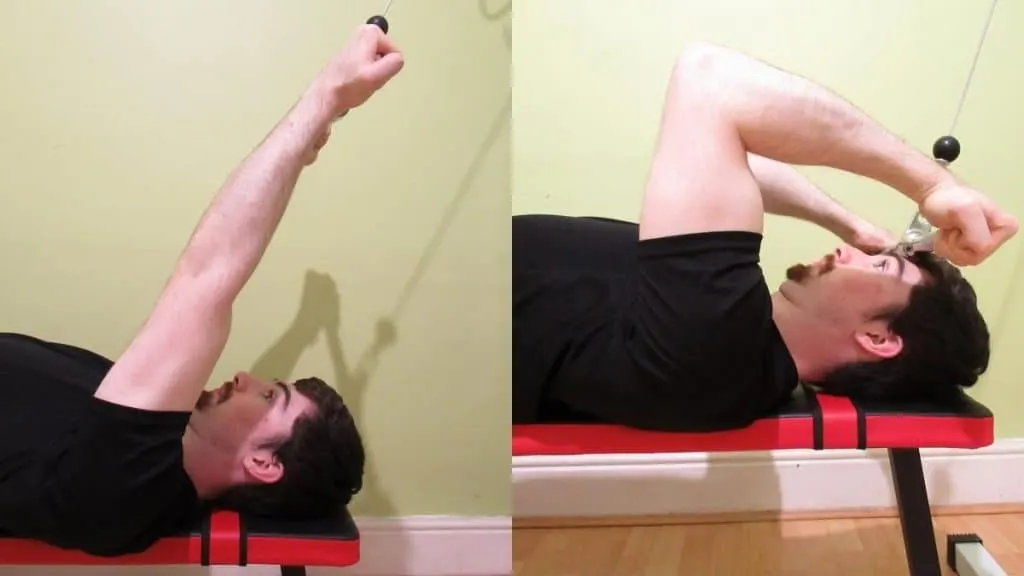
If you’re bored of doing the same kind of cable curl, then it’s highly recommended to add variety to your workout routine by giving lying cable concentration curls ago. This underrated exercise provides your biceps with an extremely intense peak contraction because it works them in a shortened muscle position.
The only problem is that it can be hard to get a bench and a cable machine at the same time if you train in a busy gym. You could just do the exercise on the floor, but if the ground is quite hard, then it might divert your attention away from your biceps, which could reduce your muscle growth.
What is the best overhead cable curl alternative?

The most effective overhead cable curl alternative is the lying cable curl because it trains your biceps in a highly contracted position. In this regard, the standard concentration curl is another excellent alternative if you don’t have access to cables because it provides a very intense peak contraction in your biceps.
Click the link to learn more about cable crossover curls, or keep reading this article for some more alternatives.
What’s a good substitute for standing cable curls?
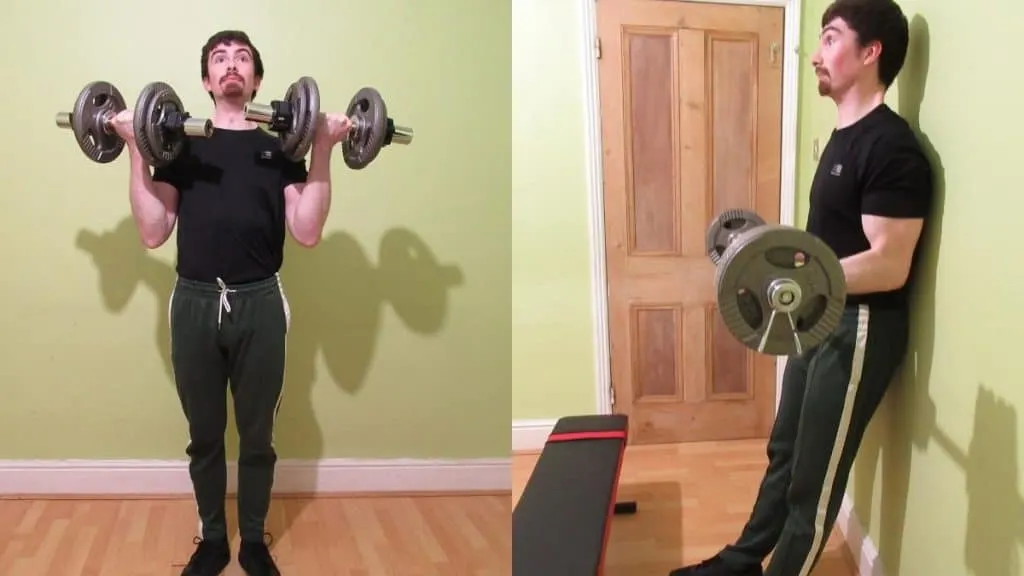
So we’ve gone over the best one arm high cable curl alternatives—and there are quite a few. But what about the regular standing curl?
For a comprehensive list of alternatives, check out our guide to the most effective cable bicep exercises. We tried 20+ different movements and created a list of the most effective drills for muscle growth and strength development.
Of course, you can also do standing curls with dumbbells, bands, or barbells. The exercise is old-school, and you can perform it with pretty much any equipment that you can grab with two hands.
In conclusion
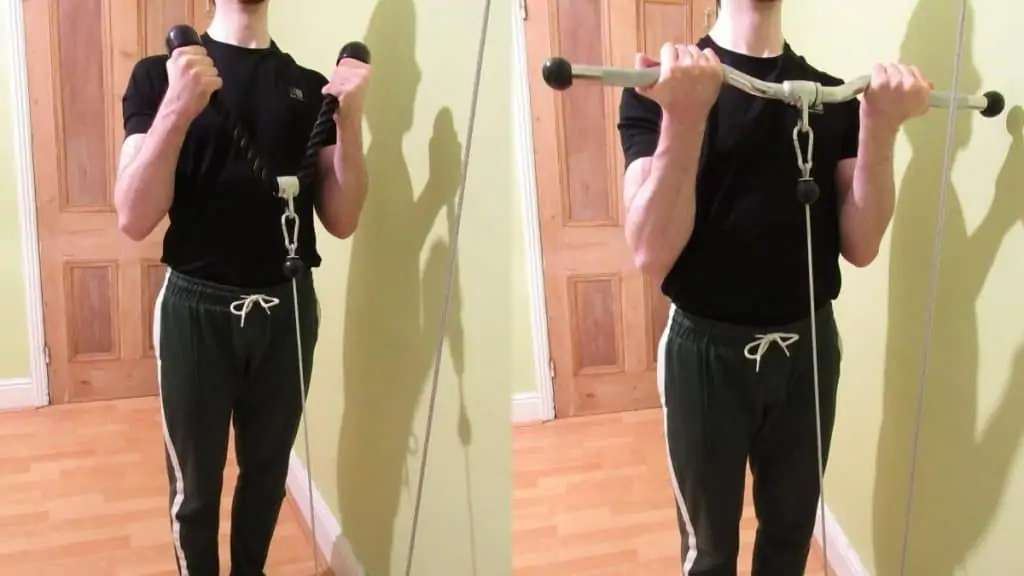
As you can see, there’s no single cable curl alternative that trumps the rest. While bands are the most obvious substitute, you can also use free weights and get similar effects.
No, you won’t have the constant tension of cable while lifting dumbbells. However, the main determinants of the quality and speed of your results are consistency in the gym and a healthy diet that’s appropriate to your training goals.
References
- Corrigendum to “Effects of training with elastic resistance versus conventional resistance on muscular strength: A systematic review and meta-analysis”. (2020). SAGE Open Medicine, 8, 205031212096122. https://doi.org/10.1177/2050312120961220

